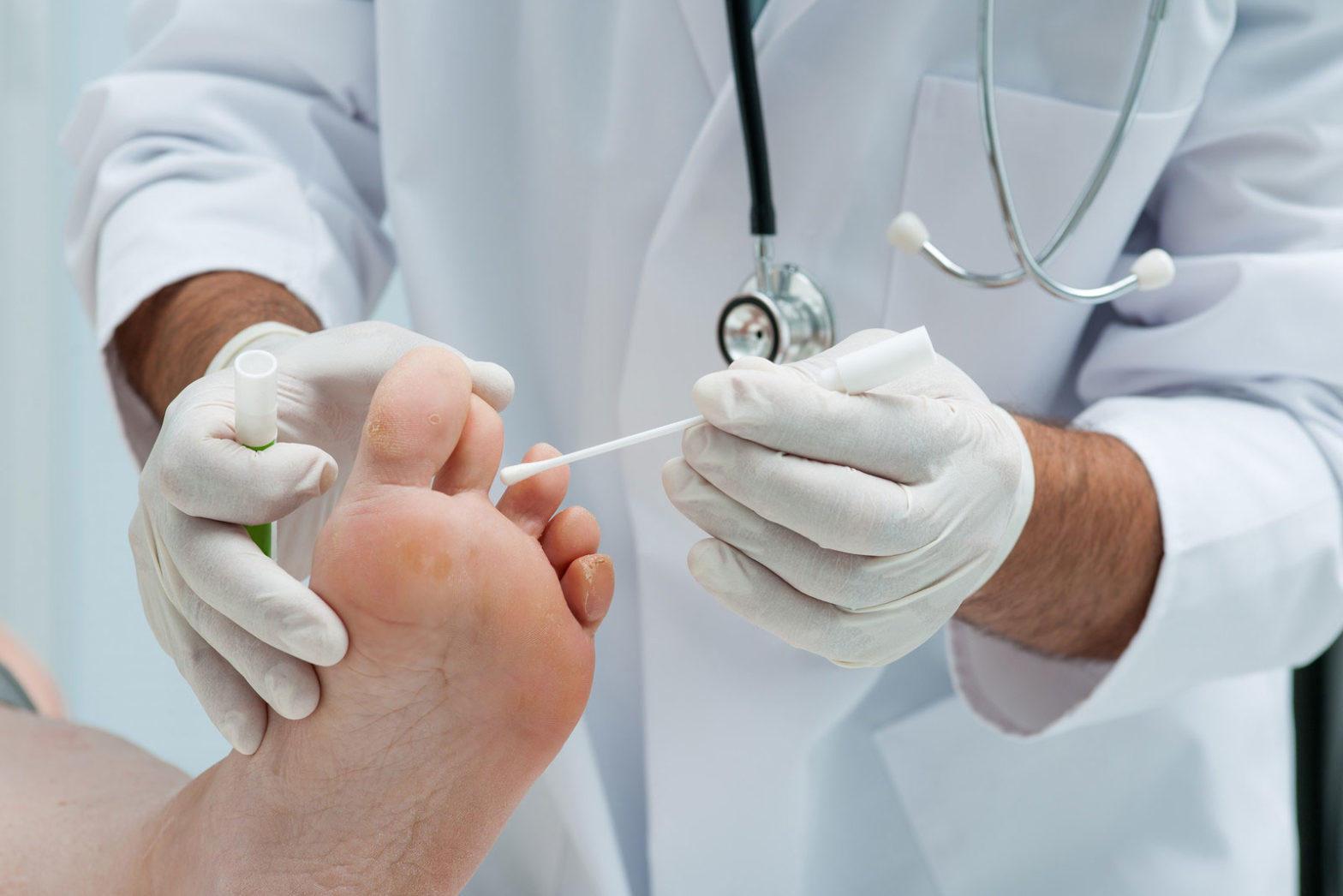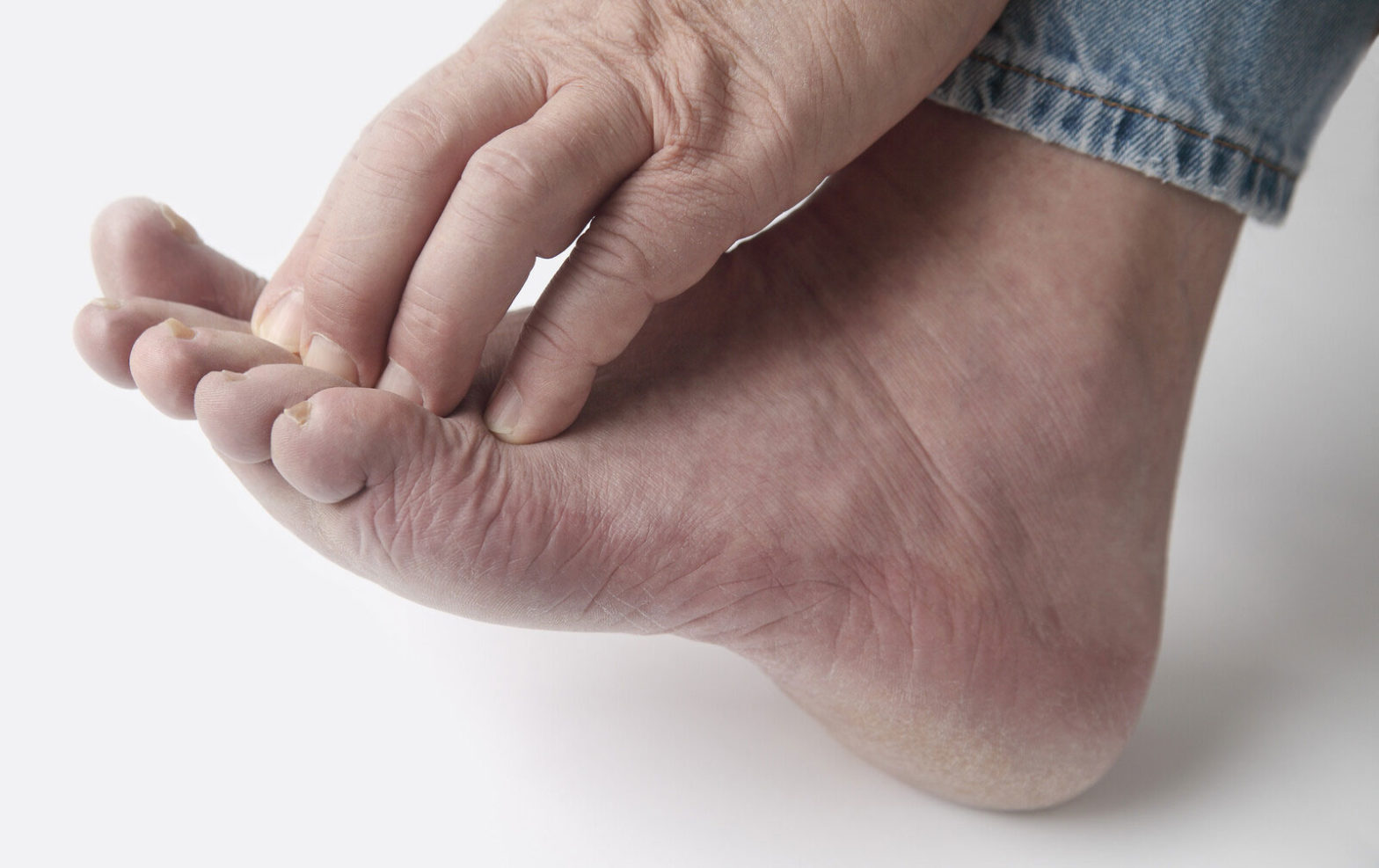Foot problems are quite common in people with diabetes. Having too much glucose (sugar) in your blood can result in low blood flow to the affected areas and reduced white blood cell function. Poorly controlled diabetes often results in complications such as foot ulcers. Regarded as the most common reason for hospital stays among people with diabetes, a diabetic foot ulcer (DFU) is an open sore caused by neuropathic (nerve) and vascular (blood vessel) complications of the disease. Typically located on the plantar surface, or bottom/top of toes, pad of foot, or heel of foot, these complex, chronic wounds can affect people with both Type 1 and Type 2 diabetes. If left untreated, diabetic foot ulcers can have a permanent, long-term impact on the morbidity, mortality and quality of a patients’ life. Podiatrists treating diabetic foot ulcers usually collaborate with a team of medical specialists including diabetologist, infectious disease specialist, wound specialist and vascular specialist to treat different types of foot ulcers. As treating non-healing foot ulcers is challenging, podiatric practices can depend on a professional podiatry billing company to simplify their claims processing tasks.
According to the American Podiatric Medical Association (APMA), approximately 15 percent of people with diabetes suffer from foot ulcers. Of those who develop a foot ulcer, about 6 percent will be hospitalized due to serious infections or other ulcer-related complications. The risk of foot ulceration and limb amputations increases with age and duration of diabetes. In the United States, about 82,000 amputations are performed each year on persons with diabetes; half of those ages 65 years or older. Treatment for diabetic foot ulcers varies depending on their causes. The most common risk factors for ulcer formation include – diabetic neuropathy, structural foot deformity, kidney disease, obesity and peripheral arterial occlusive disease. The condition can be effectively prevented if the underlying conditions causing it are diagnosed early and treated correctly.
Types of Diabetic Foot Ulcers
Typically, foot ulcers are defined by the appearance of the ulcer, the ulcer location, and the way the borders and surrounding skin of the ulcer look. There are different types of diabetic foot ulcers –
- Neuropathic ulcers – occur where there is peripheral diabetic neuropathy, but no ischemia caused by peripheral artery disease. This type of foot infection generally occurs on the plantar aspect of the foot under the metatarsal heads or on the plantar aspects of the toes.
- Neuroischemic ulcers – occur where the person has both peripheral neuropathy and ischemia resulting from peripheral artery disease. They are often seen on the margins of the foot and also develop on the tips of the toes and beneath any toe nails if these become overly thick.
- Ischemic ulcers – occur where there is peripheral artery disease present without the involvement of diabetic peripheral neuropathy. Ischemic means reduced blood flow to an area of the body. Poor blood flow causes cells to die and damages tissue. Most ischemic ulcers occur on the feet and legs and these types of wounds can be slow to heal.
Signs and Symptoms
In most cases, diabetic foot ulcers form on the soles of the feet, where skin is subject to constant pressure. Under the weight of the body, skin deteriorates and eventually becomes an open sore. These ulcers frequently form underneath calluses and cannot be felt due to diabetic neuropathy. One of the initial signs of a foot ulcer is drainage from your foot (that might stain your socks or leak out in your shoe). Other related symptoms include –
- Callused or thickened skin surrounding the ulcer
- Fever and chills (in advanced stages of foot ulcers)
- Foul-smelling discharge seeping from the wound
- Pain and firmness when the wound is touched
- Swelling, discoloration, and warmth around the wound
Treatment of Chronic Diabetic Foot Ulcer
The goal of treatment is to accelerate the healing process and reduce the chance for infection (or prevent a recurrence of infection). Treatment options generally include –
- Optimal glucose control – Tight control of blood glucose is crucial for the effective treatment of a diabetic foot ulcer. This will enhance healing and reduce the risk of other complications.
- Debridement – One of the main ways to treat an ulcer is debridement which involves removing the dead skin and tissue. A podiatrist will clean the wound and cut away all the hyperkeratotic (thickened) skin, infected and nonviable, including necrotic (dead), tissue, slough, foreign debris, and residual material from dressings. This procedure is important because dead skin hampers the development of healthy new tissues, and also makes the affected area more vulnerable to infections. Removal of the dead skin will promote quick and easy healing. Debridement will be done surgically, enzymatically, biologically, or through autolysis.
- Off-loading – This procedure relieves the pressure from the ulcerated areas. The patient is made to wear special foot gears or other supporting equipment. Pressure from walking can make an infection worse and expand an ulcer. For people who are overweight, extra pressure may be the cause of ongoing foot pain. Inadequate off-loading is a significant reason for the delay of ulcer healing. To reduce the pressure and irritation within the ulcer area and speed up the healing process, podiatrists may recommend wearing special foot gears like diabetic shoes, specialized castings, foot braces, compression wraps, shoe inserts (to prevent corns and calluses), or use a wheelchair or crutches to protect your feet. Half shoes, therapeutic shoes, custom insoles, and the use of felted foam are other alternative methods to off-load wounds located on the forefoot.
- Dressings – Wounds and ulcers heal faster and have a lower risk of infection if they are kept covered and moist, using dressings and topically-applied medications. As there are different types of diabetic ulcers, podiatrists will apply the most appropriate dressing for the specific type of ulcer. Optimal dressings are free from contaminants, will absorb toxic elements, maintain a moist environment at the wound interface, and protect surrounding healthy skin. Anti-microbial dressings are used for infected diabetic foot ulcers. Daily saline dressings will be used to provide a moist wound environment.
- Medications – Podiatrists may prescribe antibiotics, antiplatelets, or anti-clotting medications to treat your ulcer if the infection progresses even after preventive or anti-pressure treatments.
Other add-on therapies to treat chronic diabetic ulcers include – hyperbaric oxygen therapy and negative-pressure wound therapy (NPWT). A podiatrist may recommend surgical option if the affected areas of the feet get infected and there is poor blood circulation within those areas. Surgery can help remove pressure on the affected area, (including shaving or excision of bones) and correct deformities, (such as hammertoes, bunions, or bony bumps). Surgery can also help prevent your ulcer from becoming worse or leading to amputation.
ICD-10 Codes for Diabetic Foot Ulcers
Podiatrists conducting assessments and rendering diagnoses of diabetic foot ulcers (DFU) must undergo comprehensive training and have relevant experience in differential diagnosis and the full range of diabetic foot disorders. When documenting DFUs, podiatrists must carefully include the associated symptoms, diagnosis screening tests and treatment procedures performed using the correct medical codes. Outsourced podiatry billing and coding services from a reliable medical billing company can help physicians use the correct codes for their billing purposes. ICD-10 codes for documenting diabetic foot ulcers include –
- E10.621 – Type 1 diabetes mellitus with foot ulcer
- E11.621 – Type 2 diabetes mellitus with foot ulcer
- L97.4 – Non-pressure chronic ulcer of heel and midfoot
- L97.40 – Non-pressure chronic ulcer of unspecified heel and midfoot
- L97.41 – Non-pressure chronic ulcer of right heel and midfoot
- L97.42 – Non-pressure chronic ulcer of left heel and midfoot
- L97.5 – Non-pressure chronic ulcer of other part of foot
- L97.50 – Non-pressure chronic ulcer of other part of unspecified foot
- L97.51 – Non-pressure chronic ulcer of other part of right foot
- L97.52 – Non-pressure chronic ulcer of other part of left foot
- L97.8 – Non-pressure chronic ulcer of other part of lower leg
- L97.80 – Non-pressure chronic ulcer of other part of unspecified lower leg
- L97.81 – Non-pressure chronic ulcer of other part of right lower leg
- L97.82 – Non-pressure chronic ulcer of other part of left lower leg
- L97.9 – Non-pressure chronic ulcer of unspecified part of lower leg
- L97.90 – Non-pressure chronic ulcer of unspecified part of unspecified lower leg
- L97.91 -Non-pressure chronic ulcer of unspecified part of right lower leg
- L97.92 – Non-pressure chronic ulcer of unspecified part of left lower leg
According to the American Podiatric Medical Association, about 14 to 24 percent of Americans with diabetic foot ulcers have amputations. This statistics stresses the importance of good preventive care. Sinceeven a minor injury can lead to foot ulcers in diabetic people, taking adequate preventive measures are crucial. Closely managing the blood glucose levels can help reduce the chances of serious complications.
Foot ulcers are prone to infections, which may become severe. Make sure to take preventive measures such as –
- Wear properly fitting shoes that have plenty of room in them
- Keep your legs clean, dry and moisturized
- Keep toenails adequately trimmed, but not too short
- Consult a podiatrist for corn and callus removal
- Check your feet daily for any cuts, blisters or other pre-wound symptoms
- Change your socks frequently
With all these complexities, the support of an experienced podiatry coding and billing company can be helpful for reporting pressure ulcers correctly for optimal reimbursement. Coders in reliable medical coding outsourcing companies have the knowledge required to ensure accurate reporting of diagnostic details.




